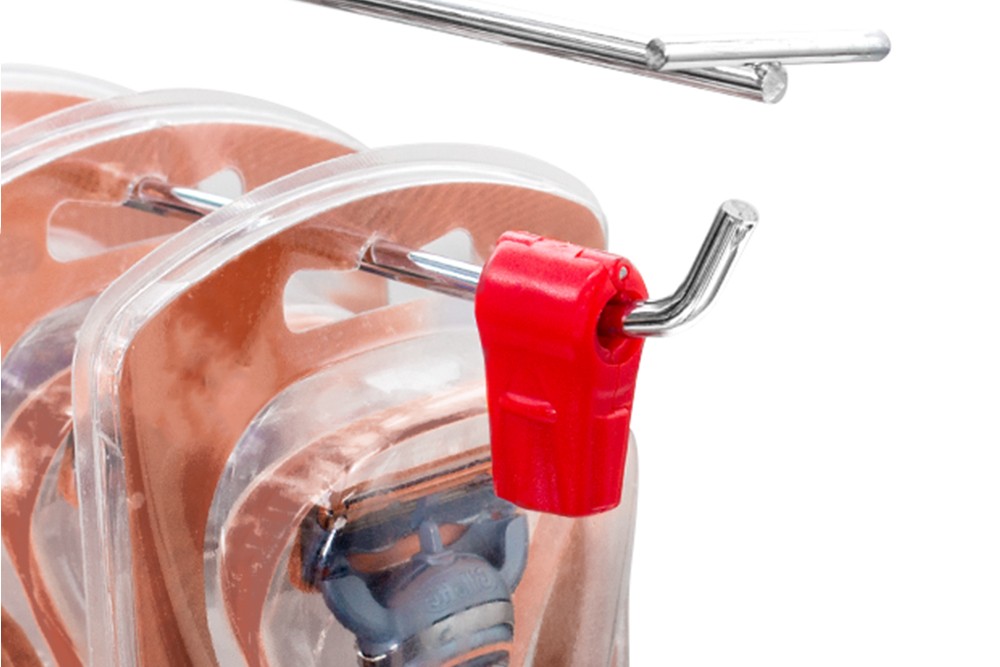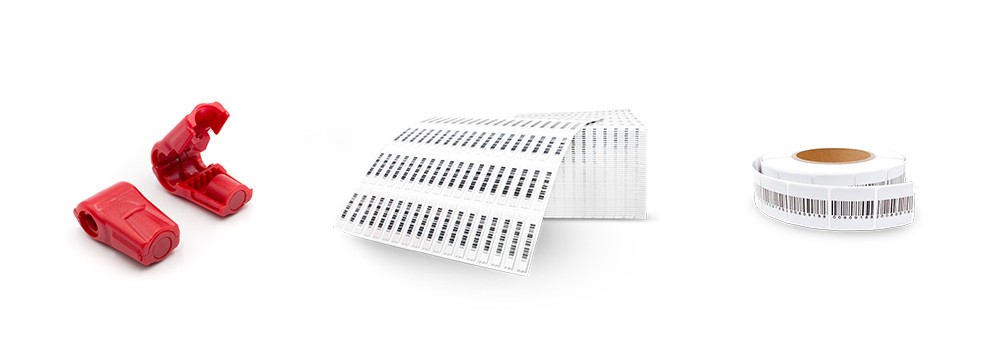
When to use stoplocks and what to consider
Whether it’s high-volume items like razor blades or high-value items like electronic accessories, sometimes a different approach is required when it comes to securing items against theft.
These types of items are often displayed in bulk, with shelf space, item appeal and customer access among the key features a retailer will be looking to retain while still protecting the items against theft.
Enter the humble stoplock – a loss prevention tool that ticks all those criteria in one simple and small display hook attachment.
Here’s a quick guide on when to use stoplocks and what to consider…
When stoplocks are used
Stoplocks are used by retailers when they have high-volume, theft-prone items which are showcased on display hooks.
They are employed in the knowledge display hooks offer a number of advantages for showcasing wares and saving shelf space, yet the items on display may be vulnerable to shoplifting.
How stoplocks work
Easy to install and affordable to implement, stoplocks work in a series of ways.
Simple stoplocks seal off the end of a display hook with a lock that ensures products cannot be accessed without the assistance of a sales associate armed with a key.
Meanwhile, there are also time delay locks available which dispense singular items from the display hook but then feature a delay before a subsequent item can be accessed.
Common products secured by stoplocks

Among the common items secured by stoplocks are high-volume items like apparel accessories, electronics accessories, small boxed products, and personal care items.
For example, razors are often secured by time delay or general stop locks in both pharmacies and grocery stores. Although these items aren’t necessarily high value, they are among the most commonly shoplifted items in retail, yet they need to be positioned on display, so the consumer knows they’re available.
Electronic accessories are also frequently targeted for theft and are commonly secured using stoplocks. This allows the retailer to showcase their range while conserving space and allowing the item to feel accessible, yet the lock still protects this highly sought-after item against theft.
What to consider
For retailers looking to display their items in a neat, open, affordable and appealing way, stoplocks can offer a series of advantages, but there are a few factors a retailer should take into account.
Customer access
Although stoplocks give the appearance that an item is on open display, a customer seeking to access it will require staff assistance.
That means stoplocks may not be ideal for products that a customer needs to test, try, feel and engage with prior to making a purchase.
Instead, stoplocks should be applied to products that consumers are already familiar with and understand.
That’s why razor blades, ink cartridges and electronics accessories like chargers are ideal products to display with a stoplock. The customer is familiar with the item, generally knows the brand they’re looking for and has committed to the purchase before asking staff to assist.
Staff access
When implementing stoplocks, retailers should also consider how easy it will be for staff to access the item on the customer’s behalf.
Unlocking the stoplock requires a special magnetic or electronic key, which should be made available to all relevant staff, while displays should be positioned in an area that is quick and easy for the staff member to access.
Positioning
Display hooks with stoplocks generally work best in a position that is within the customer’s direct line of sight in a prominent place that they can see as they are shopping in-store.
This adds to the appealing look of the display, while still giving the impression the item is easy to access and buy.
Meanwhile, these locked display hooks should be positioned at a height sales associates can readily access in a place instore which they can get to quickly to expedite the sales transaction.
Alternatives and additions

Stoplocks are an ideal and affordable way of creating an appealing display that protects items in bulk. However, occasionally a frequently shoplifted item might require additional protection or an alternative type of display.
In the case of additional protection, Electronic Article Surveillance in the form of security labels is often employed in conjunction with stop locks. Not only is the item protected in bulk, but the label then further protects the individual item against theft.
Meanwhile, items such as premium electronic accessories which the customer is looking to experience might be better protected using lockable open displays. In this case, a display item is available to test and try yet is secured to a stand or table using retractable tethers or locked cables.
Further stock is then secured behind within locked cabinets.


